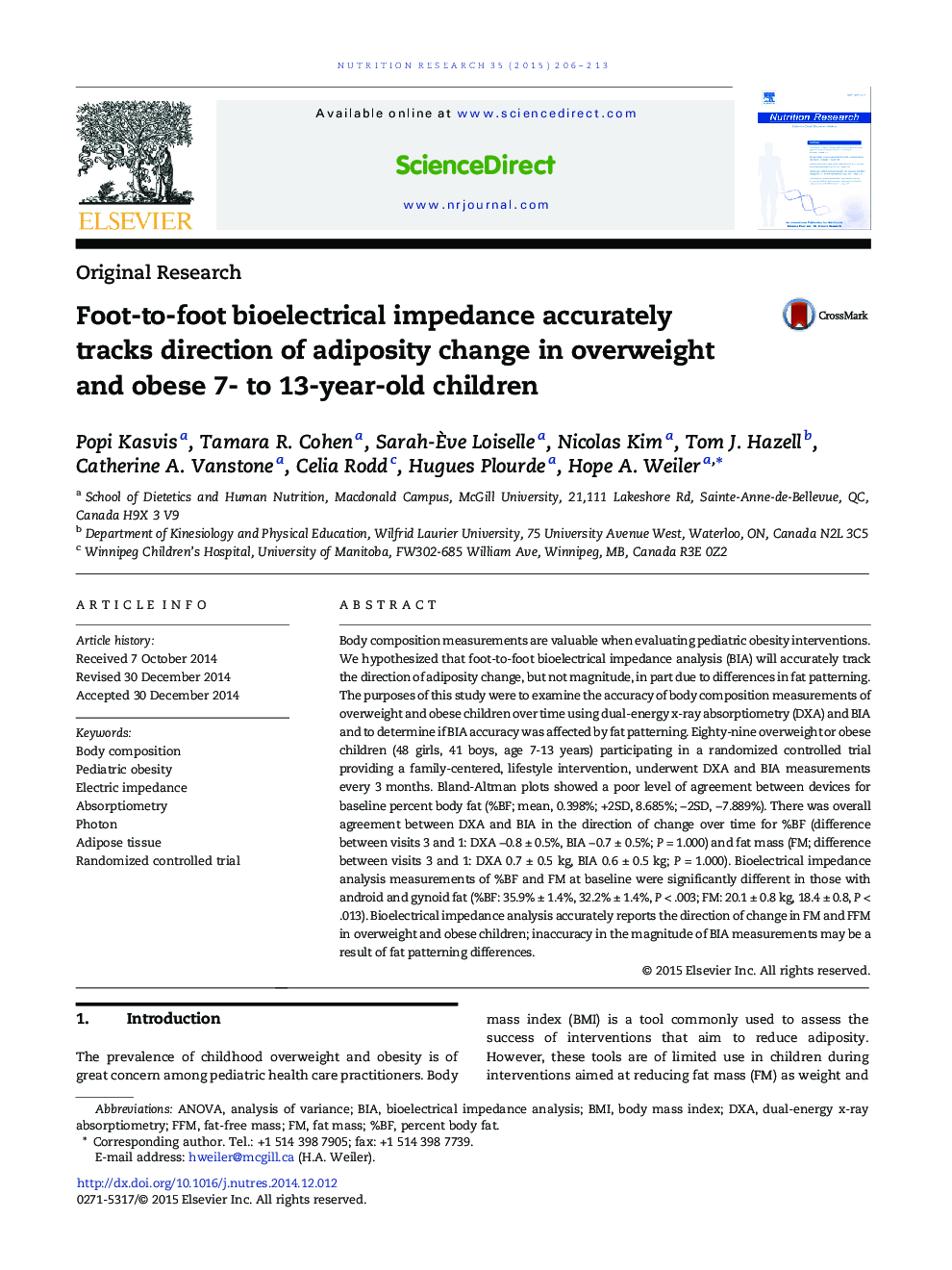| Article ID | Journal | Published Year | Pages | File Type |
|---|---|---|---|---|
| 2808848 | Nutrition Research | 2015 | 8 Pages |
Body composition measurements are valuable when evaluating pediatric obesity interventions. We hypothesized that foot-to-foot bioelectrical impedance analysis (BIA) will accurately track the direction of adiposity change, but not magnitude, in part due to differences in fat patterning. The purposes of this study were to examine the accuracy of body composition measurements of overweight and obese children over time using dual-energy x-ray absorptiometry (DXA) and BIA and to determine if BIA accuracy was affected by fat patterning. Eighty-nine overweight or obese children (48 girls, 41 boys, age 7-13 years) participating in a randomized controlled trial providing a family-centered, lifestyle intervention, underwent DXA and BIA measurements every 3 months. Bland-Altman plots showed a poor level of agreement between devices for baseline percent body fat (%BF; mean, 0.398%; +2SD, 8.685%; −2SD, −7.889%). There was overall agreement between DXA and BIA in the direction of change over time for %BF (difference between visits 3 and 1: DXA −0.8 ± 0.5%, BIA −0.7 ± 0.5%; P = 1.000) and fat mass (FM; difference between visits 3 and 1: DXA 0.7 ± 0.5 kg, BIA 0.6 ± 0.5 kg; P = 1.000). Bioelectrical impedance analysis measurements of %BF and FM at baseline were significantly different in those with android and gynoid fat (%BF: 35.9% ± 1.4%, 32.2% ± 1.4%, P < .003; FM: 20.1 ± 0.8 kg, 18.4 ± 0.8, P < .013). Bioelectrical impedance analysis accurately reports the direction of change in FM and FFM in overweight and obese children; inaccuracy in the magnitude of BIA measurements may be a result of fat patterning differences.
